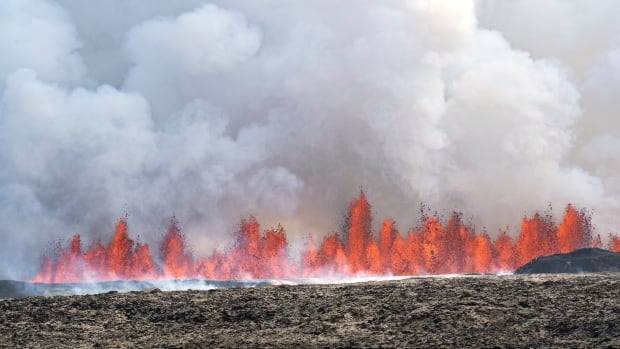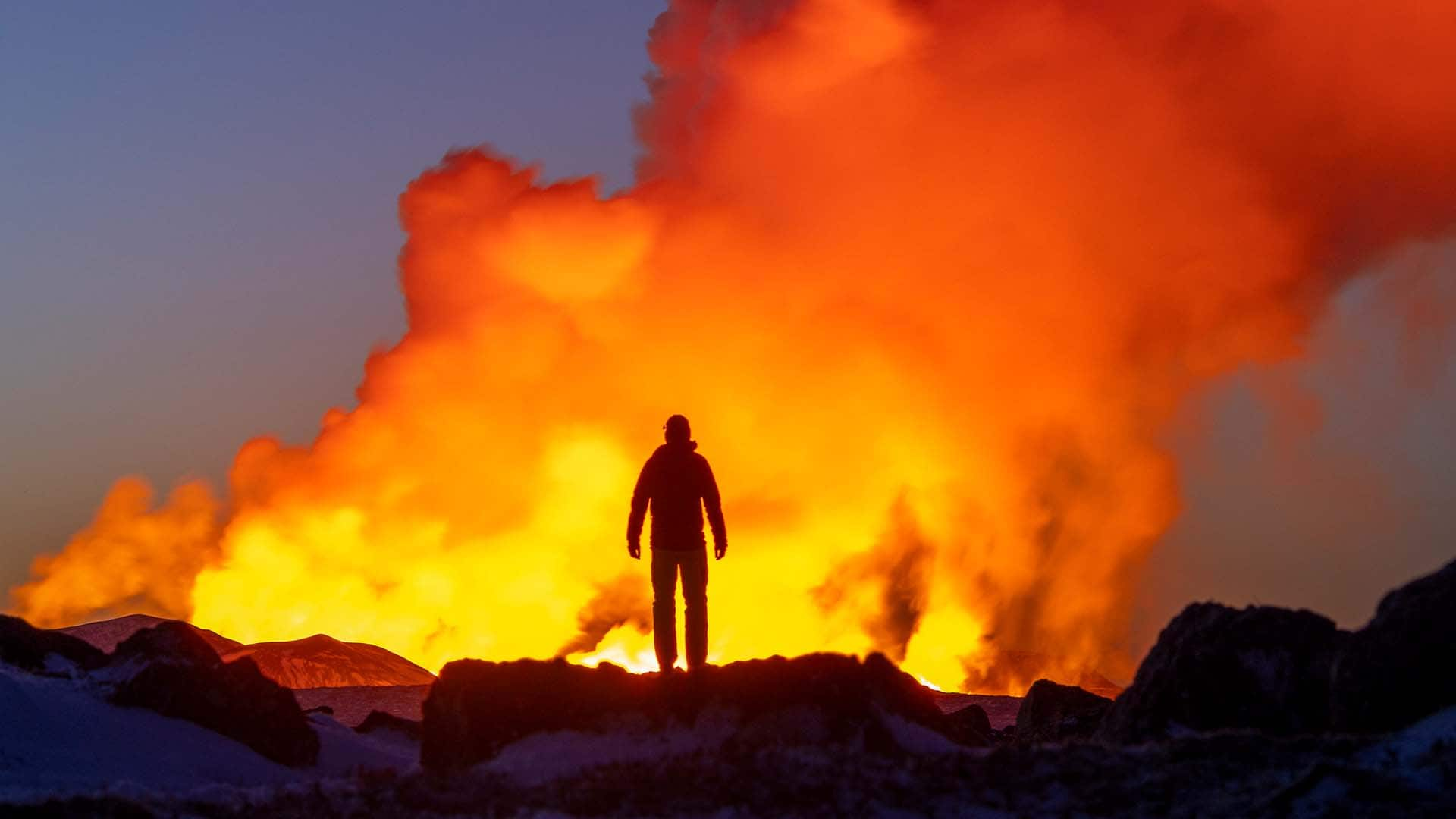
A volcano in southwestern Iceland erupted Wednesday for the fifth time since December, spewing red streams of lava in the latest display of nature’s power and triggering the evacuation of the popular Blue Lagoon geothermal spa.
The eruption began in the early afternoon following a series of earthquakes north of Grindavik, a coastal town of 3,800 people that was also evacuated.
“All those who are in Grindavik or close to town [should] leave the area and come to a safe distance,” read a post from the Iceland Civil Defence, translated from Icelandic.
The Icelandic Meteorological Office said lava was shooting about 50 metres into the sky from a fissure about 2.5 kilometres long and flowing toward Grindavik.
Grindavik, located about 50 kilometres southwest of Iceland’s capital, Reykjavik, has been threatened since a swarm of earthquakes in November forced an evacuation ahead of the initial Dec. 18 eruption. A subsequent eruption overwhelmed some defensive walls and consumed several buildings.
The Blue Lagoon thermal spa, one of Iceland’s most popular tourist attractions, is located about five kilometres from the town. The spa said it would be closed at least until Friday.
The area is part of the Svartsengi volcanic system that was dormant for nearly 800 years before reawakening.
The volcano erupted again in February and March. The Feb. 8 eruption engulfed a pipeline, cutting off heat and hot water to thousands of people.
Canadian photographer Paul Zizka shares the ‘surreal’ images he took of the volcanic eruption in Grindavik, Iceland, on Feb. 8.
Iceland, which sits above a volcanic hot spot in the North Atlantic, sees regular eruptions and is experienced at dealing with them. The most disruptive in recent times was the 2010 eruption of the Eyjafjallajokull volcano, which spewed huge clouds of ash into the atmosphere and led to widespread airspace closures over Europe.
The latest eruption was unlikely to pose a risk to air travel, according to a report from national broadcaster RUV, quoting Guðjón Helgason, press officer with airport operator ISAVIA.


